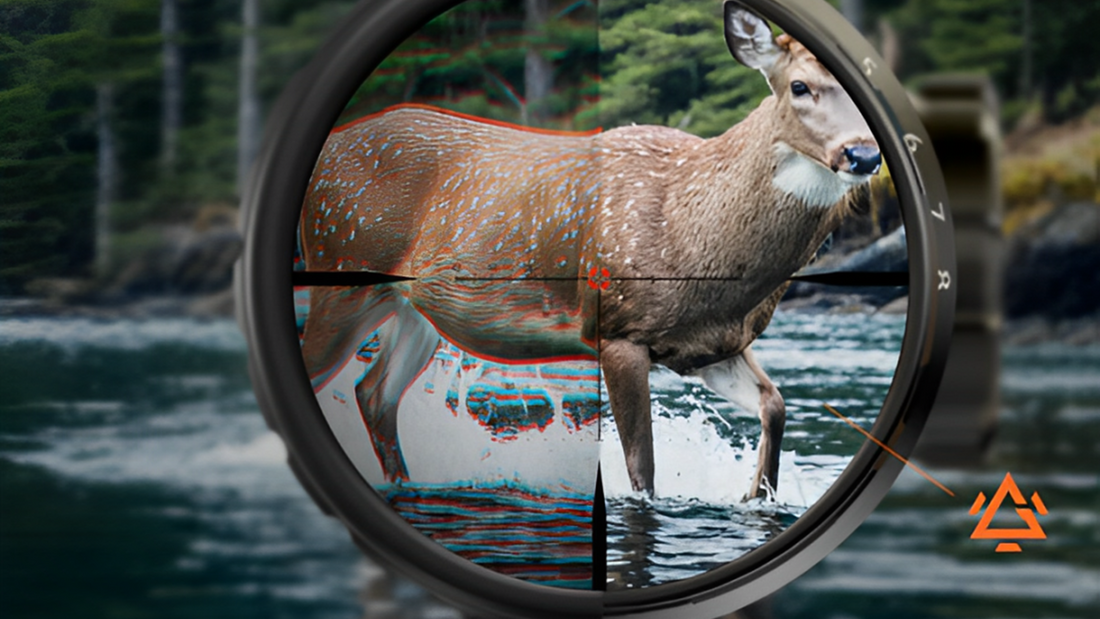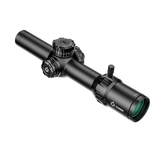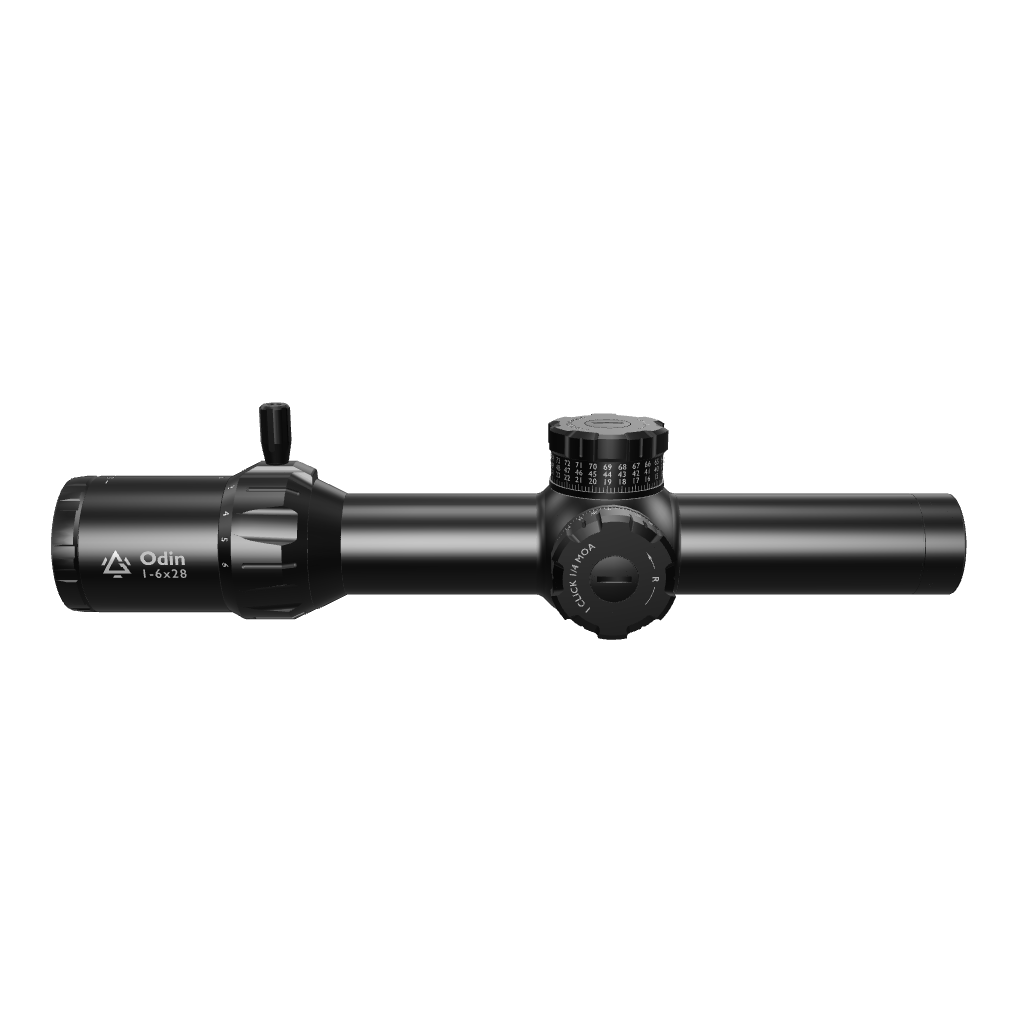How Optical Coatings Affect LPVO Clarity and Durability
Do you ever think about why some low-power variable optics (LPVO) maintain clear, sharp images even in intense sunlight, while others suffer from glare and blur? And why do some lenses stay crystal clear through sandstorms, rain, and even long-term use, while others quickly lose performance? The answer often lies in an easily overlooked detail—optical coating.
For users familiar with optics and equipment, the glass material determines a lens's fundamental quality, while the coating process is key to whether the lens performs optimally in challenging environments. Just as the coating on a camera lens directly affects image clarity and color reproduction, the coating on an LPVO significantly impacts the user's real-world experience and reliability.
Lenses and Coatings: Dual Assurance of Optical Performance
The lenses of a rifle scope are composed of optical glass made from different materials, which must possess high light transmittance and low dispersion characteristics. However, relying solely on the glass itself still leads to issues such as light reflection, chromatic aberration, and light loss.
The advent of optical coatings was specifically designed to address these challenges. By depositing ultra-thin transparent layers onto the lens surface, these coatings alter the reflection and transmission properties of light, thereby achieving the following improvements:
1.Increased Light Transmission and Imaging Brightness
Ordinary glass surfaces reflect approximately 4% of incident light. When multiple lenses are stacked, this reflection rapidly accumulates, causing brightness loss. Coatings effectively reduce reflectivity, allowing more light to enter the optical system for a brighter field of view.

2.Reducing Reflections and Glare
Coatings utilize interference effects to cancel out reflected light, effectively suppressing glare and ghosting in bright conditions. This is crucial for shooters needing to quickly acquire targets under variable lighting.
3.Strengthen Durability and Environmental Adaptability
Modern optical coatings not only enhance optical performance but also provide physical protection against scratches, water, and contaminants. The coating prevents water droplets from adhering to the lens surface while reducing grease and dust buildup, maintaining long-term clarity and cleanliness.
What are the different types of coating for glasses?
Different coating technologies directly determine the performance of the scope.
1.Single Coating
This is the most basic technology, applying only a single thin film layer to the lens surface, typically reducing reflectivity to around 2%. While superior to no coating, single-coating is now far from sufficient for modern LPVOs.
2.Multi Coating
Multi-coating involves layering multiple functional coatings on different surfaces of the lens. This effectively suppresses reflection in the visible light spectrum while improving color fidelity. High-end LPVOs typically feature fully multi-coated lenses, ensuring all surfaces are optimized to significantly enhance overall imaging performance.
3.Anti-Reflective Coating
Specifically designed to reduce surface reflections and increase light transmission. This coating is a core technology affecting image brightness and clarity.
4.Durability Coatings
Includes scratch-resistant coatings, anti-fog coatings, and water/oil-repellent coatings to maintain stable performance in rainy conditions, dusty environments, or extreme temperature fluctuations.
5.Special Function Coatings
For specialized applications, infrared filter coatings or low-light enhancement coatings may be added to meet specific tactical or environmental requirements.
How optical coatings enhance the user experience
For LPVO users, coating is not merely an improvement in technical specifications, but a tangible difference in performance:
•Target Acquisition in Bright Light
High-performance anti-reflective coatings suppress glare, enabling shooters to quickly lock onto targets even under direct midday sunlight without losing sight due to lens reflections.
•Visibility in Low-Light Conditions
Multi-layer coatings enhance overall light transmission, ensuring bright, clear images during dawn, dusk, or in shaded areas.
•Long-Term Stability
Protective coatings resist environmental damage, ensuring the scope maintains near-factory performance even after years of use.
•Color and Detail Accuracy
Premium coatings minimize chromatic aberration, sharpening target edges and preventing detail loss from color distortion. This is especially critical for long-range shooting.
Gunnr Coating Properties and Premium Experience
In the realm of optical equipment, the combination of glass materials and coating technology determines a riflescope's grade and value. Gunnr's LPVO employs advanced materials and processes, achieving comprehensive optimization in clarity and durability:
Comprehensive optimization in clarity and durability:
1.German Schott ED Glass (Extra-low Dispersion)
- Utilizes German Schott's Extra-low Dispersion (ED) Glass to significantly reduce chromatic aberration.
- Delivers exceptional edge sharpness, preventing blurred image peripheries.
- Maintains high resolution and true color reproduction even at high magnifications.
2.Advanced Fully Multi-Coated
- Each lens surface features anti-reflective coatings to significantly reduce glare.
- Enhances light transmission for brighter, clearer vision.
- Delivers stable, reliable optical performance in challenging environments.
3. Exceptional Durability
- Water-repellent and oil-repellent coatings effectively resist rain, sweat, and dust.
- Enhanced scratch resistance ensures long-term field use without damage.
- Combined with a rugged body structure, it delivers “dual protection for optics and physical durability.”
Through this combination of materials and craftsmanship, Gunnr lenses not only excel in laboratory testing but also deliver reliable performance in real-world and outdoor environments.
Conclusion
Optical coatings may appear as merely a thin film on the lens surface, yet they are pivotal in determining the clarity and durability of LPVO optics. Not only do they enhance optical performance, but they also protect the lens, extending its lifespan and ensuring users maintain stable visual experiences across diverse environments. For shooters and tactical users pursuing high performance, selecting products featuring premium coatings and premium glass materials means achieving clearer, more reliable images with every sighting. Gunnr employs German SCHOTT ED glass and full multi-layer coating technology, engineered precisely for this purpose.
It suppresses glare in bright light, maintains brightness in low-light conditions, and remains ruggedly reliable through wind, sand, and rain. Optical coatings are not mere details—they are the true core of a scope's performance.







